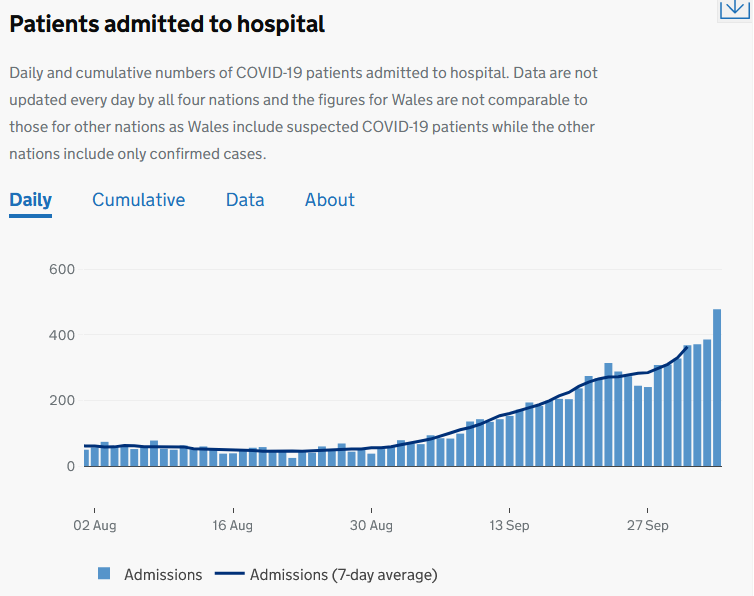
Let's not lose sight of what's happening.
We may not be able to rely on case data. But here's the latest PHE map of cases. Not now restricted to the north east and the north west - look at London
So if we can't rely on cases, we have to use other metrics.
We may not be able to rely on case data. But here's the latest PHE map of cases. Not now restricted to the north east and the north west - look at London
So if we can't rely on cases, we have to use other metrics.

Here is a graph of admissions to hospital in England.
478 people were admitted today. And the trend is upwards.
478 people were admitted today. And the trend is upwards.

What happens if you deteriorate is that you end up in ICU or a High Dependency Unit.
So what's happening there? These are increasing too.
So what's happening there? These are increasing too.

And, sadly, deaths (note that there is a delay in reporting deaths, and that only deaths within 28 days of a test are shown here) 

Remember that deaths from case numbers reported now are inevitable. It takes just under a week to present symptoms from catching the disease, and a week or so before admission to hospital, and a few weeks after that until sadly some people die.
We know more deaths are coming. Government policy can influence how many.
The question we need to be asking is:
What is the Government's reasonable worst case scenario estimate for deaths?
And, if the Government cannot provide an answer, why not?
The question we need to be asking is:
What is the Government's reasonable worst case scenario estimate for deaths?
And, if the Government cannot provide an answer, why not?
• • •
Missing some Tweet in this thread? You can try to
force a refresh








